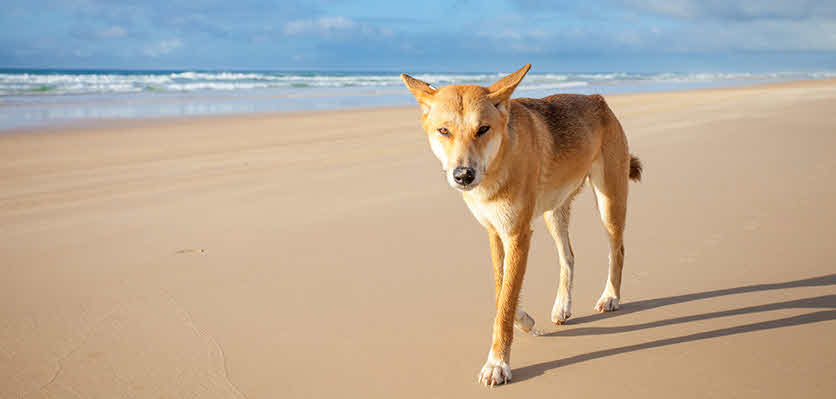
The dingo has been present in Australia for at least the past few thousand years, with the earliest dated fossil being around 3500 years old. They are recognised native animals, but are also classified as a pest species in many jurisdictions and often defined as ‘wild dogs’. Since the commencement of livestock farming across Australia over the past 200 years, the dingo has had a negative relationship with graziers. Early on, many efforts were made to eliminate populations and this has resulted in the dingo being absent from many parts of its historical range.
The control of wild dogs is an ongoing issue for graziers because they can cause significant financial losses through predation of sheep, goats and calves. By sight alone, it is often difficult to differentiate dingoes and their hybrids from wild dogs and it is this dilemma that lead to the Western Australian Government to recently consider removing the dingo’s status as native wildlife and classify them as ‘non-fauna’. This would make them no different to any other dog and allow them to be killed throughout the state.
The Canidae is a diverse group that includes the domestic dog, wolves, coyotes and dingoes. Individuals can interbreed and produce fertile offspring and therefore technically could be classified as one species using the ‘biological species’ concept.
A recent study published in Zootaxia argues that the dingo should retain its own species within the Canis group and not be classified with the domestic dog because they have been geographically isolated from all other canids for thousands of years and genetic mixing with modern domestic dogs is only a recent occurrence.
The dingo has also never been truly domesticated and demonstrates unique morphological, behavioural and reproductive differences to the domestic dog, such as the lack of barking and breeding only once per year between March and June.
Although our pet dogs, such as Pugs, Poodles and Labradors, would be honoured to be considered the same as a dingo, they cannot fit into the dingo’s shoes in the wild and the important role they play in the Australian ecosystem.
Domestic wild dogs already pose the greatest threat to the dingo’s survival, because interbreeding reduces the number of pure dingoes throughout the country, but classing all dingoes as ‘feral dogs’ undermines their unique history in the Australian environment and could negatively affect the conservation of pure dingo populations in the future.
This article originally appeared in the May 2019 Australian Veterinary Journal.
